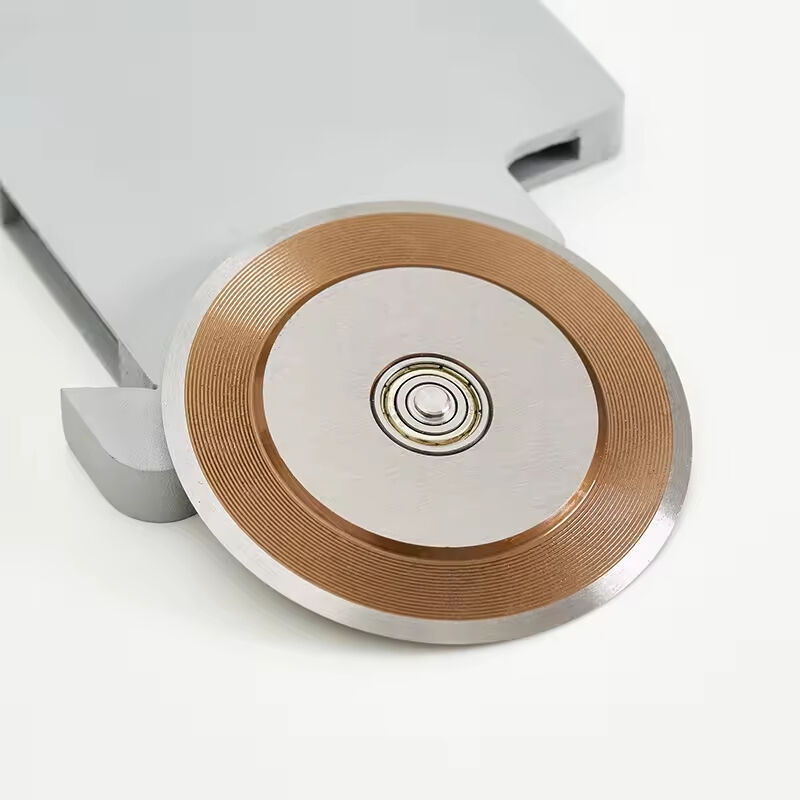Introduction
Like how the material of a round blade is very much the deciding factor in its cutting tool world. Be it woodworking, metalworking, or even masonry cutting, the material makes all of a deep difference in edge hardness (how well it stays sharp), toughness (ability to handle shock loading without cracking or breaking), heat resistance (the ability to remain hard and wear resistant at elevated temperatures), and so on. We will look at how different materials affect round blade performance, then some guidance on the best material types for your specific applications.
Round Blades Made of Common Materials
There are many kinds of materials used to make round blades, each having its unique properties leading to performance implications:
High Speed Steel (HSS) – An older material that finds use in the production of cutting edges due, to its versatility between hardness and toughness.
Carbide-Tipped Steel – Carbide-tipped saw blades are much more durable than standard steel blades, as they have heads made of tungsten or carbide depending on the quality and combination with other materials being used. Cutting hard materials like metals and masonry relatively well
Holding both higher hardness and heat resistance, solid carbide blades only find use in high-performance applications where minimum accuracy and maximum longevity is the goal.
Diamond Coated: Designed for penetrating cutting of uniform wear materials, including concrete and stone. With this diamond coating, you get the ultimate in wear resistance and cutting power required to get the job done.
Kiln: While ceramic knives are rare, they do provide some of the hardest edges available. which means they are appropriate only for uncommon applications when covered material fails to do the trick.
Effect of Material on Blade Performance
The performance of a round blade entirely relies on the material it is built out of. The performance indicators are as follows:
Hardness: Hardness is yet another measuring scale, hardness indicates how hard can it be to retain a sharp edge. Extremely hard materials such as carbide and ceramic tools do not become dull quickly so ultra-hard porcelain can be cut.
Sure, hardness is a big deal, but toughness is what keeps that blade from being dislodged under the forces of cut and causing a chip or break. Surprisingly, high speed steel and carbide-tipped steel fills the best median between hardness and tough.
Cutting gets hot and that may change part properties due to the heat; so a blade material needs to resist those conditions. High-speed steel and solid carbide are heat-resistant materials.
Durability: Every knife will become dull at some point. However, if you use high wear-resistant added coatings like diamond-coated and solid carbide blades the rate is considerably reduced.
Appropriate Usage and Material Compatibility
The type of material that a blade is made out of is often determined by the application:
Woodworking – HSS and carbide-tipped steel is generally the most accessible, which will transfer over well to different cuts through wood types with a decent amount of control.
For the Metalworking: Solid carbide and carbide-tipped steel blades are recommended for their effectiveness in cutting through the hardest metals with high precision.
Diamond Blades for Masonry and also Concrete Cutting
diamond layered edges are perfect for cutting hard, rough materials including concrete as well as stone.
Cutting Plastics and Composites: Specific blades are sometimes needed to get a clean cut on plastics/composites, as these materials can be difficult to cut without melting or delaminating.
To the juncture of steel and rubber
Technological advancement has made several new materials and coatings useful for the enhancement of blade performance besides:
Coatings and Treatments A blade can last longer, as well as cut better when coated with titanium nitride or diamond-like carbon which are treatments that increase hardness, wear-resistance, and heat resist ace.
Composite materials combine the strengths of various materials into one, offering exceptionally defining capabilities across different lineages.
Maintenance and Longevity
Likewise, blade material also determines maintenance tendencies and durability:
Different Materials = Different Maintenance: Depending on the material, you may have to go through a different maintenance routine. Some materials, like diamond coated blades, require specific methods of cleaning to ensure the cutting edge is maintained.
Learn About Blad Life: Keeping the blade clean and sharp are two preventative maintenance steps to prolong your blades life. The material also affects the number of times need to maintain/replace them.
Cost Considerations
It might seem hard to justify the initial cost on a good blade, but when you take stocks of how much saving accrues over time:
First Cost vs. First Save -- Carbide, diamond-coated blades and the like may know look like overkill on today's balance sheet but those tools can pay huge dividends in performance and replacements down the line.
Availability and Cost of Raw Materials: Similar to other parts, the volatile market of raw materials could affect their prices consequently affecting total blade costs.
Conclusion
Performance of a round blade is heavily featured from material. The selection of materials used can vastly affect a blade's performance — driving force from hardness and toughness, heat and wear resistance to efficiency, dimensional precision stability, and service life. Knowing what different hardware types are related to a certain utility will help the users decide how to better improve their cutting process. To maximize performance and value, it is important to choose the right blade material for woodworking, metalworking or masonry applications.

